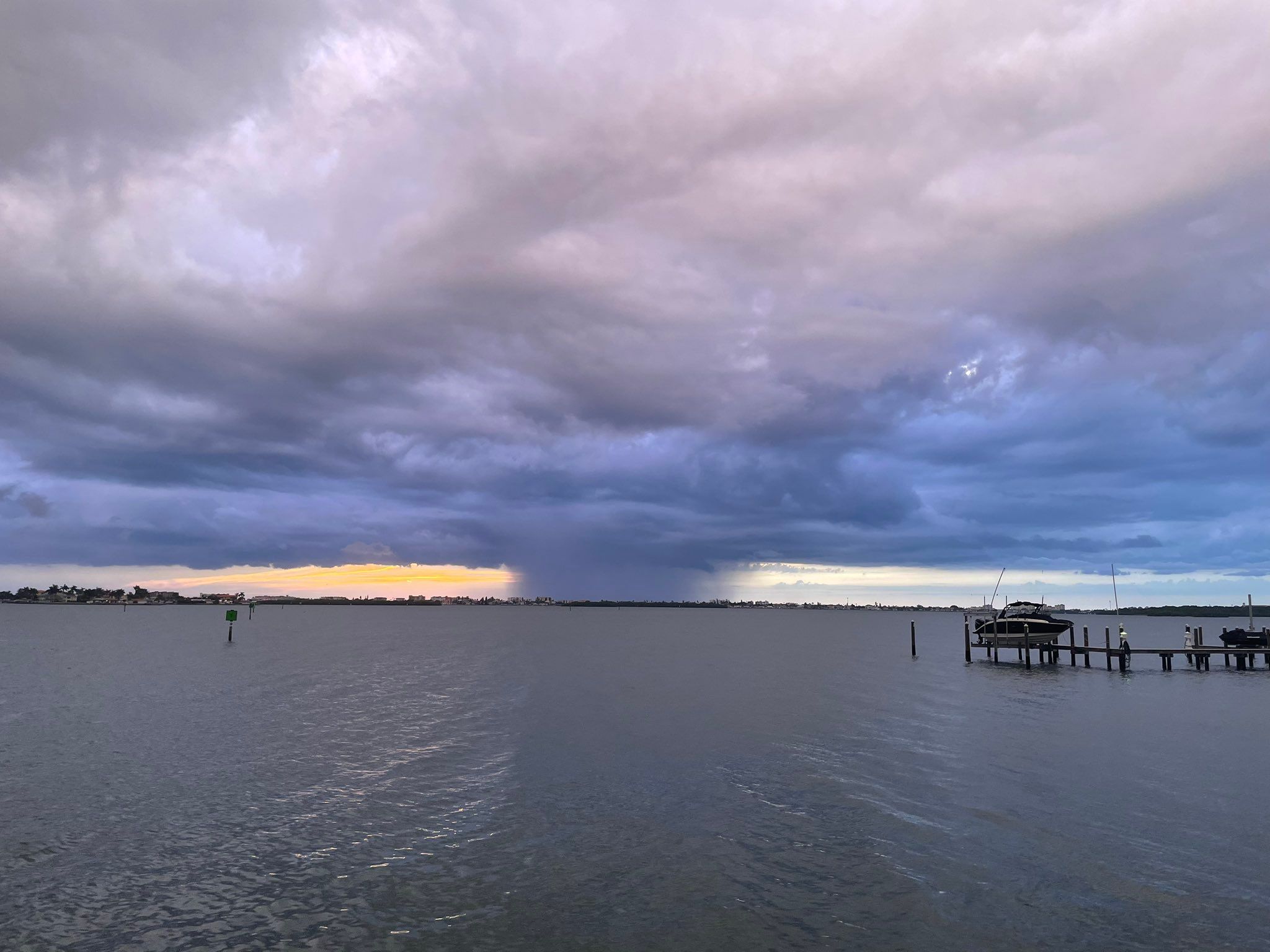Over 2 million people have already left as Hurricane Ian bears down on Florida’s west coast. The hurricane season had been pretty peaceful up until Hurricane Fiona made landfall in Puerto Rico less than two weeks ago.
Also read: What is the Atlantic hurricane season?
How to prepare for hurricanes and recover from them
When faced with natural tragedies of such epic magnitude, it’s easy to feel helpless. Although leaving as soon as possible is the only surefire way to entirely avoid these hazardous storms, it isn’t always an option for everyone.
Nevertheless, one can take precautions to safeguard your house and loved ones. This thorough list of actions you should undertake to prepare for and recover from a storm was put together by Stacker after consulting official guidelines from the Federal Emergency Management Agency, Department of Homeland Security, Red Cross, and other experts.
Also read: What is a storm surge?
The next time a disaster strikes, take the following precautions to make sure you have everything you need and can safely return home, survey the damage, and start the rebuilding process. Always keep in mind that a hurricane’s harmful consequences frequently persist even after the weather itself clears.
1. Create an emergency plan
You must have a natural disaster emergency plan wherever you reside. Determine where you will seek refuge, how you will leave, and how you will connect in an emergency with your family and friends.
2. Create an emergency supply kit
Each person should carry a “go bag” in their emergency supplies kit, which should be kept filled in every household. You’ll have everything you require to stay safe and healthy whether you need to shelter in place or escape quickly.
Also read: What is Hurricane Ian?
3. Analyse the local risk factors
While some states—like Florida—frequently suffer this kind of disaster, others are regularly struck by hurricanes. Find out how frequently tropical storms affect your county by doing some research, and then assess your risk of flooding by looking at the FEMA flood map.
4. Assemble a supply of useful items
Home improvement shops will be overrun by people seeking to buy sandbags, plastic sheeting, and other items to keep floodwater out of their homes just before a hurricane makes landfall. Beforehand, store these supplies in a secure location to avoid having to join the rush.
5. Remember to plan for your pets
6. Identify your escape route
7. Backup your electronic devices
8. Fill bottles with sterile water for drinking
9. Maintain a minimum half-full gas tank
If authorities order an evacuation, you should leave right away so you don’t have to stop for gas with the rest of the crowd. To be safe, don’t allow your gas gauge fall below half a tank.
Also read: Tyndall issues warning level for Hurricane Ian
10. Ensure that your home insurance is updated
Verify the validity of your homeowner’s insurance policy and that you are aware of its coverage provisions. Although many conventional insurance does not cover flooding, a key issue during storms, many do cover damage brought on by flying objects, falling trees, and strong winds. If you reside in an area that is vulnerable to hurricanes, think about getting flood insurance.
11. Understand how to shut off the gas, water, and electricity in your house
Before a hurricane, local officials may issue warnings advising citizens to cut off their utilities to avoid gas leaks and potentially fatal explosions. Make sure you understand how to shut off your power, water, and gas lines.
12. Gutter and exterior drains should be cleaned
Stormwater will back up into your home if it has nowhere else to go. To keep water circulating and reduce the possibility of flooding, clear debris and obstructions from gutters and other drains.
13. Tree trimming near your house
A storm needs sustained winds of at least 74 miles per hour to qualify as a hurricane. Trees can be readily knocked over by winds that are strong, putting your home at risk of serious damage. Maintain clipped tree limbs and think about eliminating any trees that are within 20 feet of your home.
Also read: Ohio Task Force 1 sending help to Florida in anticipation of Hurricane Ian
14. Protect all of your windows and doors
Property is much more likely to sustain serious structural damage once hurricane winds have entered it. People who live in hurricane-prone areas may want to install steel or aluminium storm shutters permanently. Make interim covers for your doors and windows out of five-eighths-inch exterior grade or marine plywood if such a job isn’t in the budget. In this manner, you may quickly and easily install your temporary shutters as meteorologists anticipate a hurricane.
15. Protect and strengthen your roof
16. Take pictures of every room in your house
You’ll need to create a thorough inventory of everything you own in case you need to subsequently submit an insurance claim for hurricane damage. Taking pictures is the quickest method to prepare for this. You won’t have to strain your memory later trying to recall how many books you have on that bookcase if you take a walk through your home and take pictures of everything you can think of.
17. Carry lighter, small objects inside
Patio furniture, trash cans, and bicycles can all be lifted effortlessly by those winds, which range in speed from 74 to 157 mph. Bring whatever you can inside before a hurricane hits to prevent it from becoming a flying missile.
18. Lock any other items you can’t move inside
19. Adjust your freezer and refrigerator to the coldest level
As soon as you learn that a hurricane is headed your way, turn your refrigerator and freezer to the coldest setting. In the event of a power loss, keeping your food as cold as possible will help it survive longer.
Also read: 3 reasons why Hurricane Ian hitting Florida can lead to severe flooding
20. Roll up big rugs
Large space rugs will absorb stormwater like a sponge if your house floods. To keep them dry, roll them up and place them upright.
21. Load the sinks and bathtubs with water
Fill bathtubs, sinks, and even buckets with clean water that you may use for bathing, cleaning, and toilet flushing before turning off your water supply. Even if you don’t require it, this water could be helpful if your water supply runs out.
22. Don’t use matches
Floodwaters that are surging can damage seals or destroy gas lines, leading to severe gas leaks. Use a flashlight rather than a candle to light your path when you first return to your house. By doing this, you can prevent an explosion from occurring by accident if there is a gas leak. Turn off the main valve and notify the fire department, police, and gas company right away if you detect gas or believe there is a leak.
Also read: Florida Governor Ron DeSantis declares emergency as tropical storm Ian apporaches
23. Avoid drinking or cooking with tap water
The same dangerous germs found in floodwater can potentially contaminate tap water during hurricanes and tropical storms. Till the local authorities give the all-clear, avoid drinking or cooking with tap water.
24. Check your house once it is safe
When you are able to get back home, inspect it for any damage. As you go room by room through the residence, take pictures of any problems you encounter. In this manner, you’ll be ready to start repairs and submit any required insurance claims.
25. As soon as you possibly can, report any losses
If the hurricane has damaged your house, you should contact your insurance provider right away. Include any pictures you have of the losses and a general description of the damage.
Also read: Hurricane Fiona strikes Dominican Republic after Puerto Rico, leaves 3 dead
26. Protect your property from further harm
Even after the storm has passed its peak, persistent weather might cause problems. When it is safe to enter your home again, take precautions to limit future harm. Cover any gaps in your roof caused by falling trees with a tarp to keep out moisture. Plastic sheeting should be taped over the opening if your windows have been blasted out. This step might be important because the majority of insurance policies don’t cover damage caused by a storm.
27. Get your home inspected
Before beginning any cleaning or repairs, make sure your house is secure enough for habitation. Consult a qualified contractor to assess the building’s structural soundness, a qualified electrician to assess your wiring, a qualified plumber to assess your water lines, and a qualified gas company to assess your gas lines for any breaks.
28. Put on safety gear before cleaning
Even if your house wasn’t severely damaged, you’ll probably need to clear up a lot of the trash that has accumulated on your land. You shouldn’t touch the debris with your bare hands either, as floodwater may have polluted it. When cleaning up after a tragedy, the CDC advises wearing protective gear such as hard helmets, goggles, heavy-duty work gloves, and waterproof boots.
Also read: What is Fiona, tropical storm threatening Puerto Rico?
29. Anything damp should be thrown away
Air out your home and discard any damp objects that won’t dry fast, such as mattresses, couches, and books, to start the cleanup process. If mould has already begun to grow, remove it using a bleach and water solution. Floodwater-soaked insulation and drywall must be removed as well.
30. Take care of your mental health
Additionally, experts advise not overworking yourself as you recover from a hurricane. After a disaster, emotions are frequently strong, making it harder to focus on physical duties than usual. Dealing with the aftermath of a disaster can prove to be quite traumatic. Consult a professional, if required.







